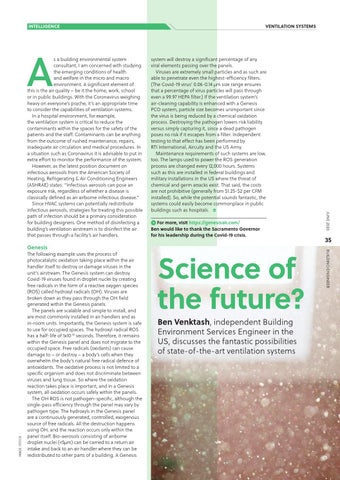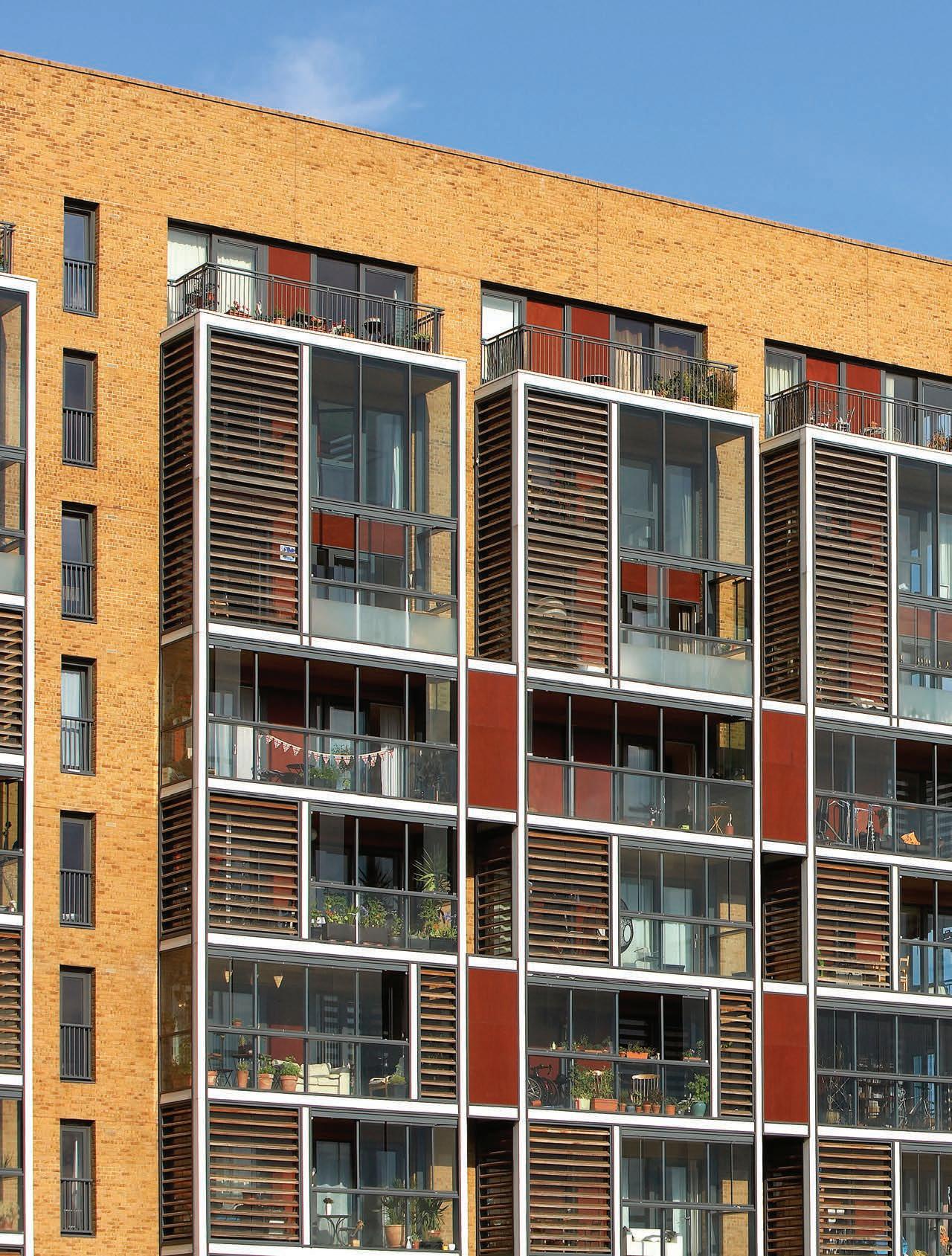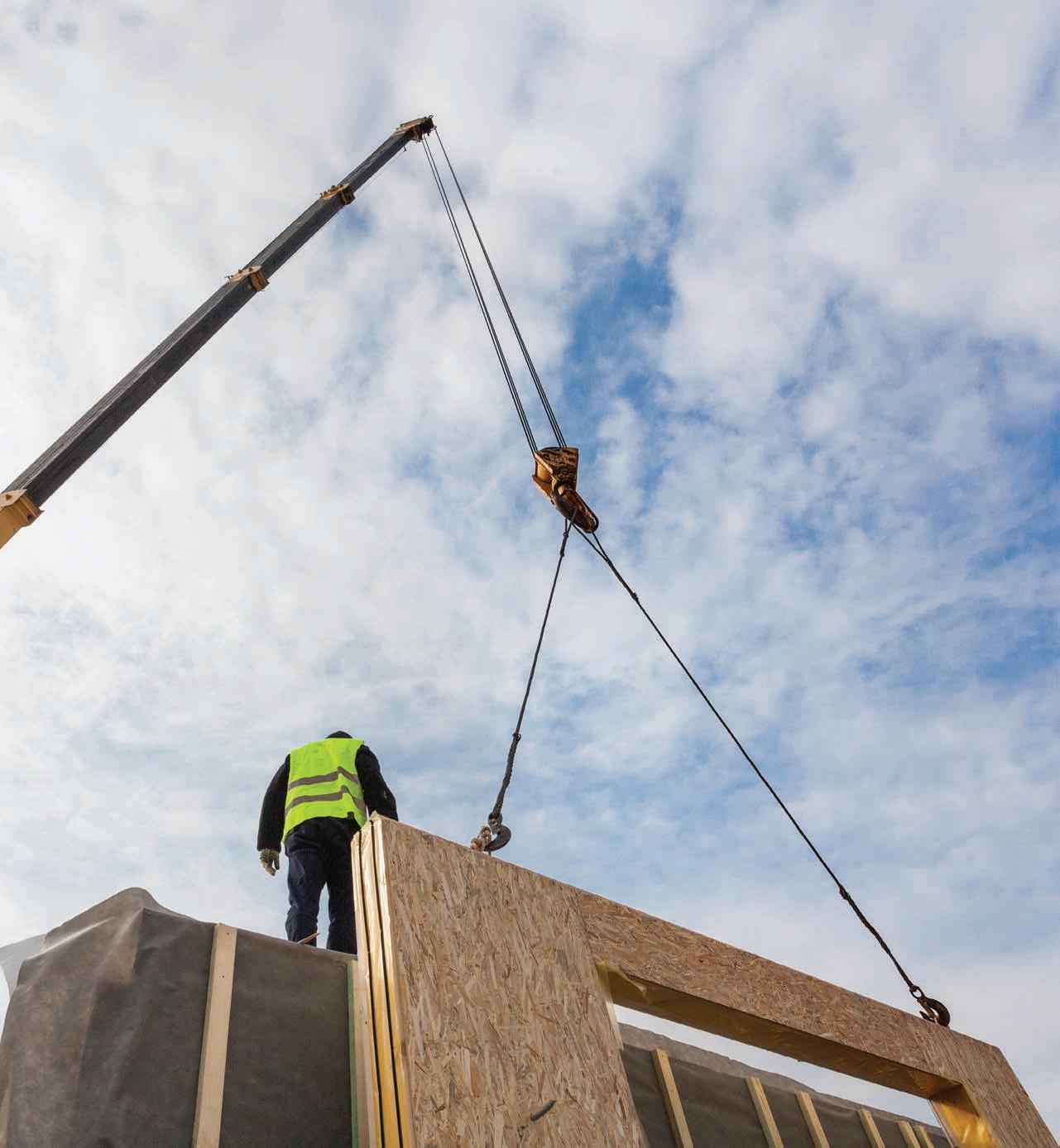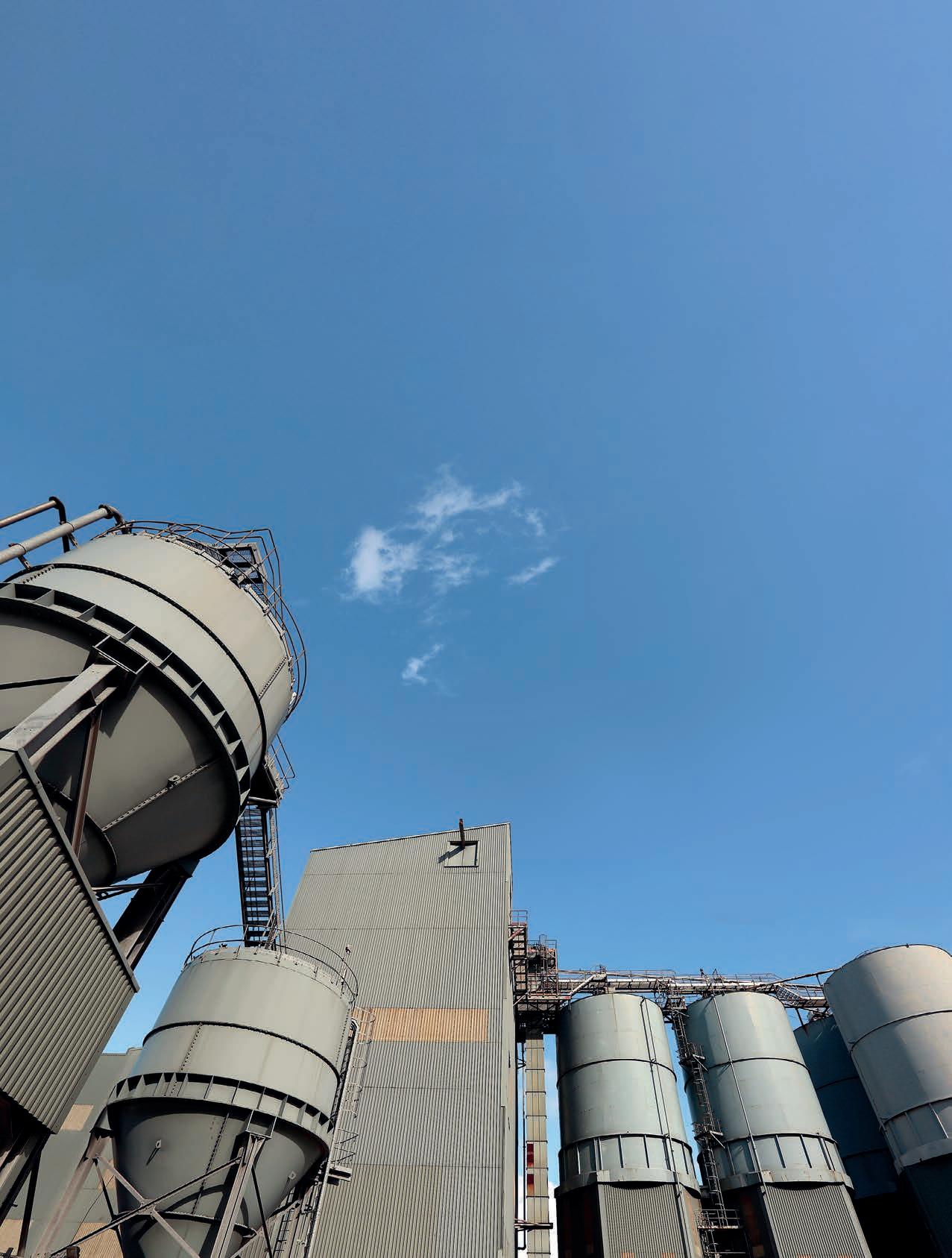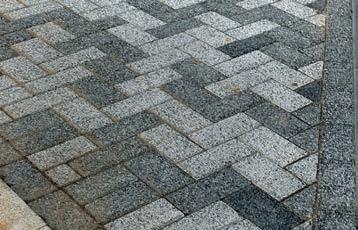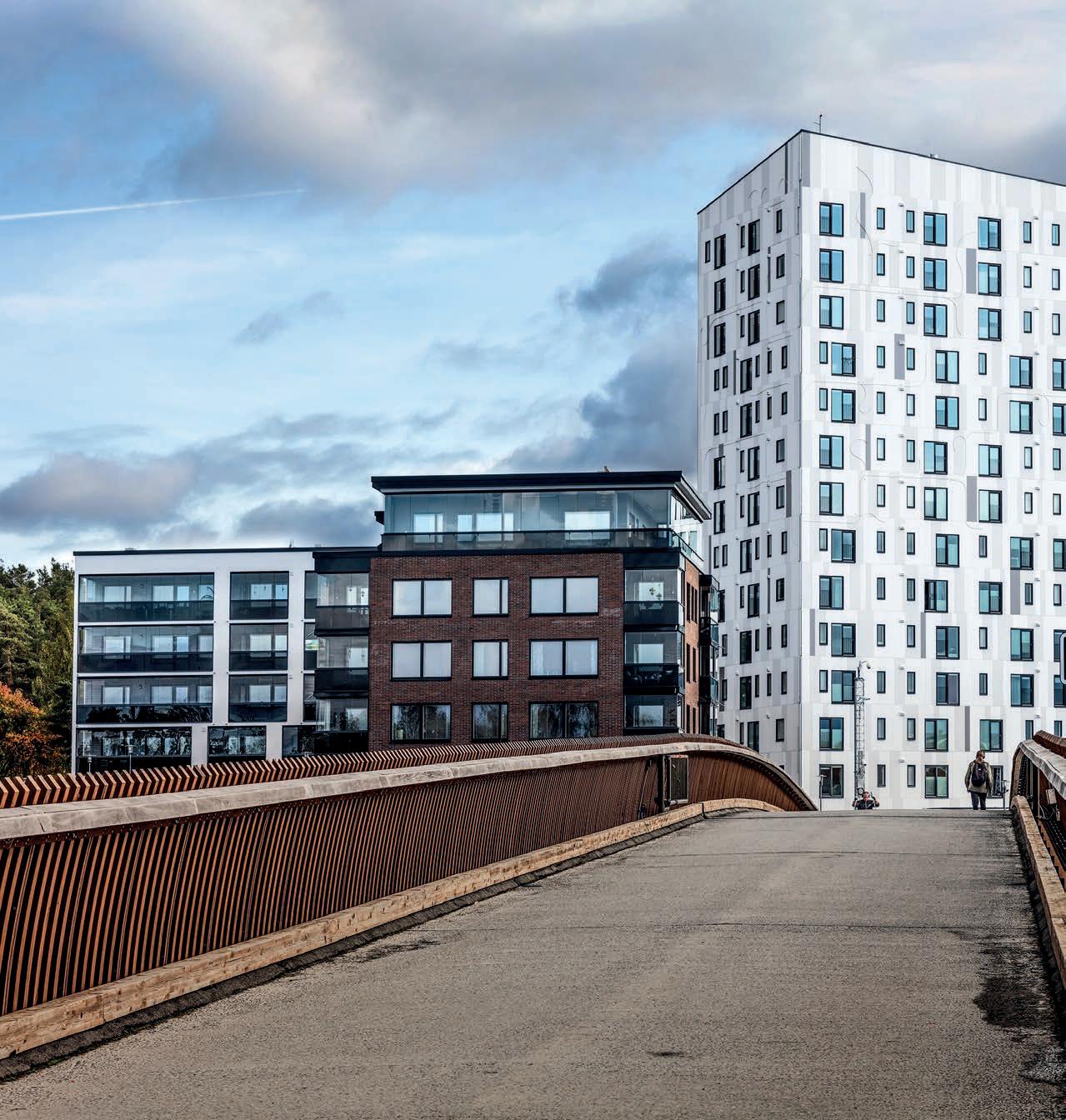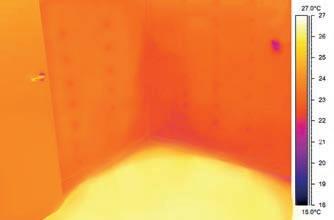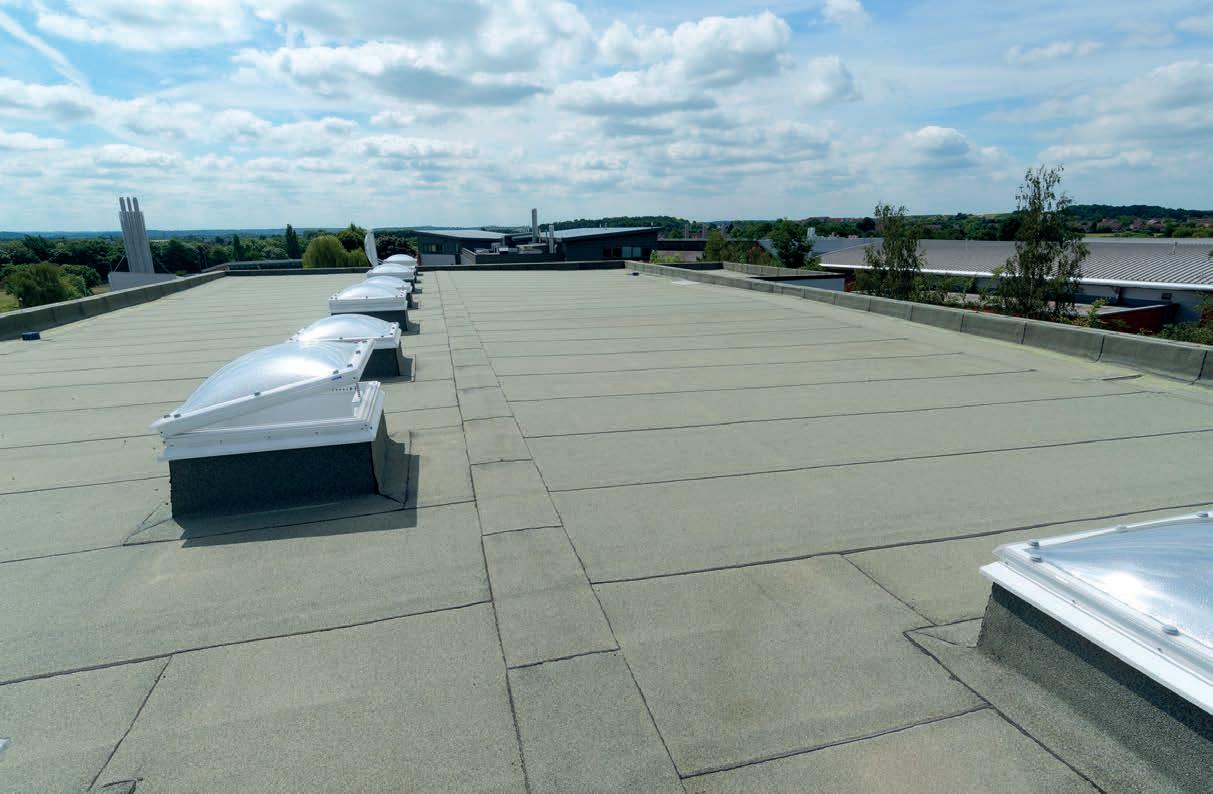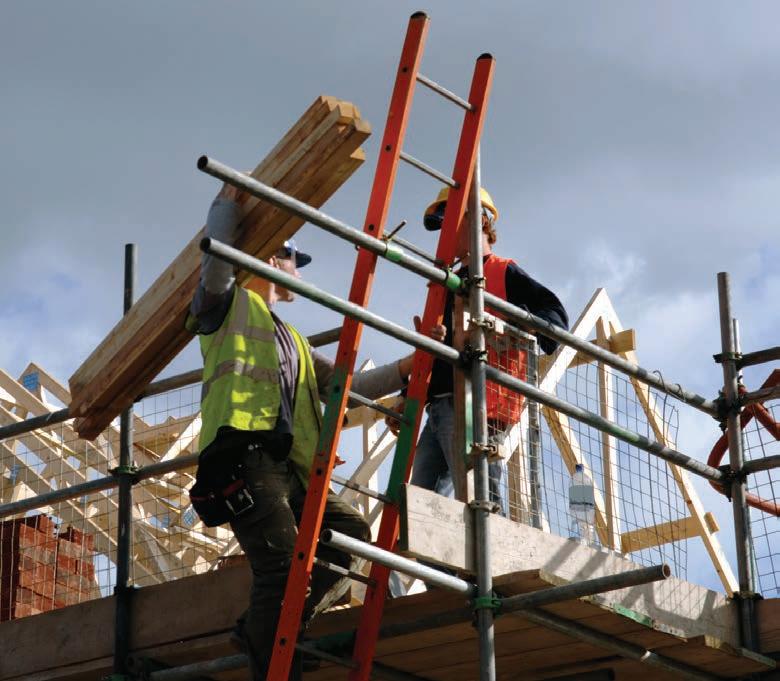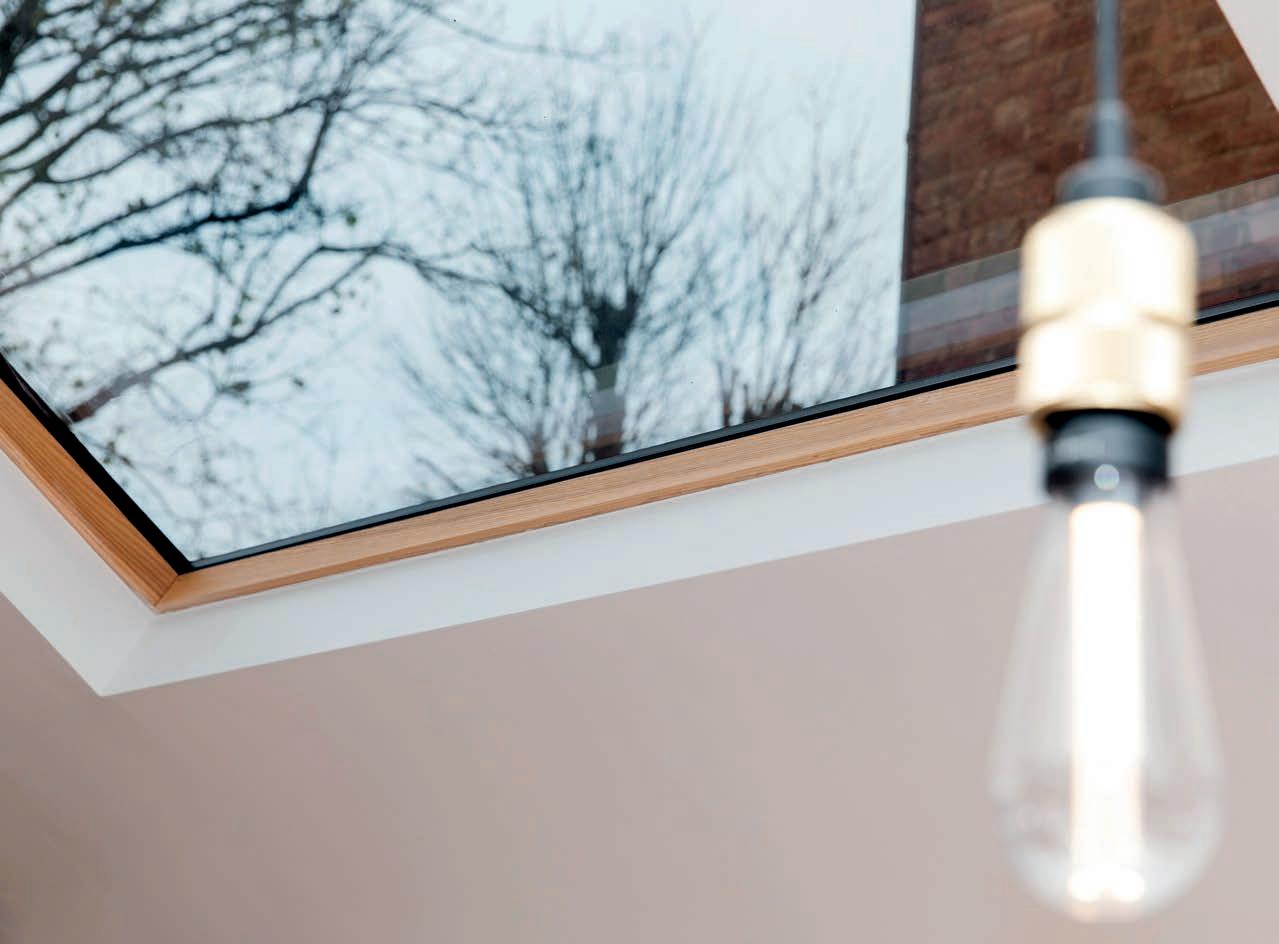INTELLIGENCE
A
system will destroy a significant percentage of any viral elements passing over the panels. Viruses are extremely small particles and as such are able to penetrate even the highest-efficiency filters. (The Covid-19 virus’ 0.06-0.14 μm size range ensures that a percentage of virus particles will pass through even a 99.97 HEPA filter.) If the ventilation system’s air-cleaning capability is enhanced with a Genesis PCO system, particle size becomes unimportant since the virus is being reduced by a chemical oxidation process. Destroying the pathogen lowers risk liability versus simply capturing it, since a dead pathogen poses no risk if it escapes from a filter. Independent testing to that effect has been performed by RTI International, Aircuity and the US Army. Maintenance requirements of such systems are low, too. The lamps used to power the ROS generation process are changed every 12,000 hours. Systems such as this are installed in federal buildings and military installations in the US where the threat of chemical and germ attacks exist. That said, the costs are not prohibitive (generally from $1.25-$2 per CFM installed). So, while the potential sounds fantastic, the systems could easily become commonplace in public buildings such as hospitals. For more, visit https://genesisair.com/ Ben would like to thank the Sacramento Governor for his leadership during the Covid-19 crisis.
IMAGE: ISTOCK
The following example uses the process of photocatalytic oxidation taking place within the air handler itself to destroy or damage viruses in the unit’s airstream. The Genesis system can destroy Covid-19 viruses found in droplet nuclei by creating free radicals in the form of a reactive oxygen species (ROS) called hydroxyl radicals (OH). Viruses are broken down as they pass through the OH field generated within the Genesis panels. The panels are scalable and simple to install, and are most commonly installed in air handlers and as in-room units. Importantly, the Genesis system is safe to use for occupied spaces. The hydroxyl radical ROS has a half-life of 1x10-10 seconds. Therefore, it remains within the Genesis panel and does not migrate to the occupied space. Free radicals (oxidants) can cause damage to – or destroy – a body’s cells when they overwhelm the body’s natural free radical defence of antioxidants. The oxidative process is not limited to a specific organism and does not discriminate between viruses and lung tissue. So where the oxidation reaction takes place is important, and in a Genesis system, all oxidation occurs safely within the panels. The OH ROS is not pathogen-specific, although the single-pass efficiency through the panel may vary by pathogen type. The hydroxyls in the Genesis panel are a continuously generated, controlled, exogenous source of free radicals. All the destruction happens using OH, and the reaction occurs only within the panel itself. Bio-aerosols consisting of airborne droplet nuclei (<5μm) can be carried to a return air intake and back to an air handler where they can be redistributed to other parts of a building. A Genesis
35 SOAVentSystems.indd 35
Science of the future?
35 BUILDING ENGINEER
Genesis
JUNE 2020
s a building environmental system consultant, I am concerned with studying the emerging conditions of health and welfare in the micro and macro environment. A significant element of this is the air quality – be it the home, work, school or in public buildings. With the Coronavirus weighing heavy on everyone’s psyche, it’s an appropriate time to consider the capabilities of ventilation systems. In a hospital environment, for example, the ventilation system is critical to reduce the contaminants within the spaces for the safety of the patients and the staff. Contaminants can be anything from the outcome of rushed maintenance, repairs, inadequate air circulation and medical procedures. In a situation such as Coronavirus it is advisable to put in extra effort to monitor the performance of the system. However, as the latest position document on infectious aerosols from the American Society of Heating, Refrigerating & Air Conditioning Engineers (ASHRAE) states: “Infectious aerosols can pose an exposure risk, regardless of whether a disease is classically defined as an airborne infectious disease.” Since HVAC systems can potentially redistribute infectious aerosols, strategies for treating this possible path of infection should be a primary consideration for building designers. One method of disinfecting a building’s ventilation airstream is to disinfect the air that passes through a facility’s air handlers.
VENTILATION SYSTEMS
Ben Venktash, independent Building Environment Services Engineer in the US, discusses the fantastic possibilities of state-of-the-art ventilation systems
18/05/2020 16:09
